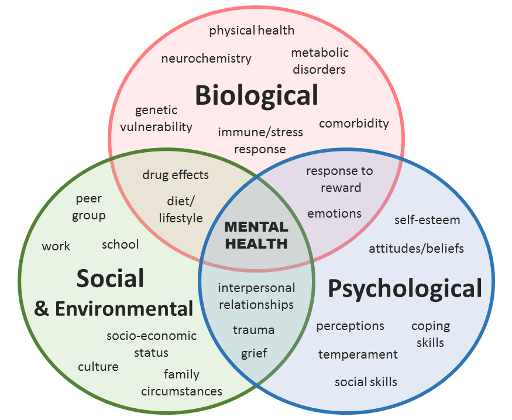2 The biopsychosocial model of mental health: revisited
Cast your mind back to the first course in the series Exploring anxiety [Tip: hold Ctrl and click a link to open it in a new tab. (Hide tip)] (Section 1.1), where we introduced the biopsychosocial model for mental health. Recall that a central assumption behind the biopsychosocial model is the interdependence between biological, psychological and social factors. We noted that 'this approach examines the three interdependent factors, biological, psychological and social, in devising explanations and possible interventions in mental health', and that 'the biopsychosocial model is … an arguably more "integrative, non-reductionist clinical and theoretical" model that "honors the importance of all relevant domains of knowledge, not just the ‘biological" (Benning, 2015). In Figure 1, you will see that we have added ‘environmental’ to ‘social’ factors. In certain respects, environmental factors also encompass social elements (or vice versa), so in this version of the model, we have included both within the same category. This bio-psycho-socio-environmental (BPS-E) model is shown in Figure 1. We have compartmentalised elements that have been discussed in this course on the figure according to where they best align – in some cases you will see that the alignment falls across boundaries (intersections). Look carefully at this figure, and from what you have learned from this series (and from your prior studies or professional experience), see if you agree with the positioning of these important elements. Are there any others that you think should be added to this Venn diagram, and if so, in which segment?

